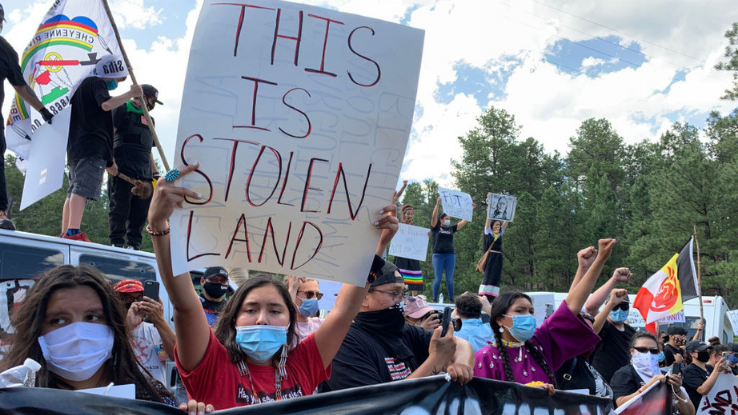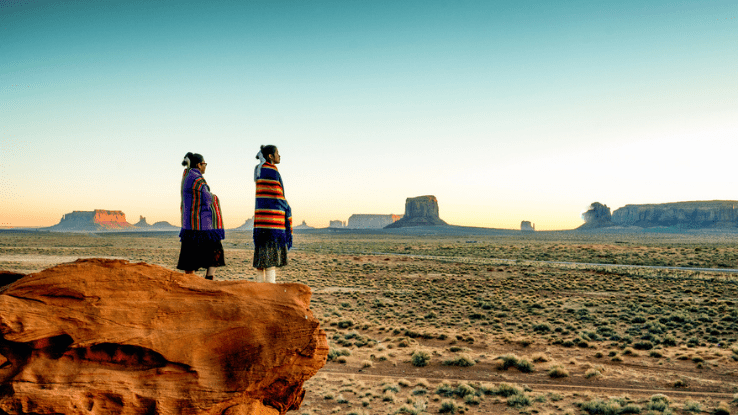What Is the Importance of a Land Recognition?

In December of 2021, Sacramento city officials made a formal recognition of the Indigenous groups whose land California’s capital was built on. The city’s Racial Equity Ad Hoc Committee brought forth the acknowledgment, which was proposed by city council member Mai Vang, with Indigenous people and tribal leaders.
One of these leaders, Wilton Rancheria tribal chairman Jesus Tarango, explained at the land recognition ceremony, “When you just get down to the bare basics of it, it goes back to just recognition and respect… Our people were here, this land was settled, even though history will teach you that people felt that it was unsettled.” Tarango went on to say, “We’re still here as well.”
The concept of land recognition is relatively simple. However, it’s a part of a multi-step process that can lead to a more equitable environment for anyone connected to the land being acknowledged. But what steps are involved in making a formal land acknowledgement? And what steps follow a land recognition?
Here, we’re answering these and other questions about land recognition. And we’re starting with making our own. Reference is based on Ohlone, Muwekma and Confederated Villages of Lisjan land, also known as Oakland, California.
What Are Land Recognitions?

According to the Native Governance Center, “Indigenous land acknowledgment is an effort to recognize the Indigenous past, present, and future of a particular location and to understand our own place within that relationship. Usually, land acknowledgments take the form of written and/or verbal statements.”
A land recognition statement can be as simple as saying, “Before I begin, I’d like to acknowledge that I’m on the traditional homelands of the (name of Indigenous group).” It can also include more complex statements that speak to the history of the land the speaker is on and note action steps the speaker or organization is taking to empower local Indigenous groups.
Land recognitions are becoming more common. They’re appearing in “About Us” sections on websites for companies, brands and personal pages. They’re also happening via spoken word. You might hear them at a college commencement, virtual town hall or sports game. No matter where they appear, they’re helping to promote important conversations and oppose the erasure of Indigenous histories.
How Can You Learn What Land You Live On?

Several easy-to-access resources are available to help you learn more about the land you’re on. Many people use native-land.ca to find out the tribal histories of different areas. Started by a nonprofit organization in Canada called Native Land Digital, the project aims to foster conversations about colonialism. The site was first developed in 2015 and has become a premier source of information for people seeking this vital information.
It’s important to note that the map primarily focuses on North America, South America and Australia. Some areas of Europe, Africa and Asia are also labeled on the map, but they aren’t as detailed as those for the Americas and Australia. The map is available in eight international and Indigenous languages, and more are to come. The project is continually evolving, and the map, which has support from Indigenous communities, corporate sponsors and volunteers from across the globe, is always improving.
You can also access this information via text message. Verizon uses data from Native Land Digital’s map and can send it directly to your phone. To start, text the address in question to 907-312-5085. You’ll receive a response listing the names of the Indigenous groups whose land you occupy and a website link to learn more. However you choose to access this information, taking this step can help you begin to reconcile the damage done to Native communities throughout history and strengthen personal relationships to that land today.
What Should You Do After You Acknowledge Land?

It’s important to note that land recognition is the first step in a longer process. If your activism ends with land recognition, it could be interpreted as performative allyship. Acknowledging land doesn’t directly aid Indigenous groups or actively reverse harm that’s been done to them, but it can be a starting point for real change.
Land recognition enables you to do more than enhance speeches and documents. When you know the tribal history of an area, you’re able to dive into the history of the land and the people who traditionally called it home. This can inspire you to find out the different living habits and environmental practices of tribes that lived in or continue to live in the area. Indigenous populations have long taken important steps to protect Earth’s biodiversity, and learning about this history gives you an opportunity to connect with the land in a different way.
Acknowledging land also creates space to find out how its traditional groups may have been forced out of it. This, in turn, can help you recognize uncomfortable truths about history — and start taking action to better support Indigenous communities now and in the future.
This may lead to small steps that can result in bigger changes, like supporting mutual aid projects and donating to scholarships that support Indigenous communities. There are also many political and environmental causes you can support to show solidarity with different groups; efforts like #stopline3 are often led by Indigenous people. Motivation to take steps to protect the earth can come from a strong relationship to the land you walk on, and land recognition is an effective way to develop a close bond with that land.
But land recognition is about so much more than “going green.” It’s about honoring the people who have called different lands home for centuries and working to ensure their voices are heard. Land recognition reinforces the idea that knowing history is important — and that seeing the impacts of that history today matters. Land recognition is an initial action that can impact the spaces you inhabit most by leading towards solutions for the greater good.





